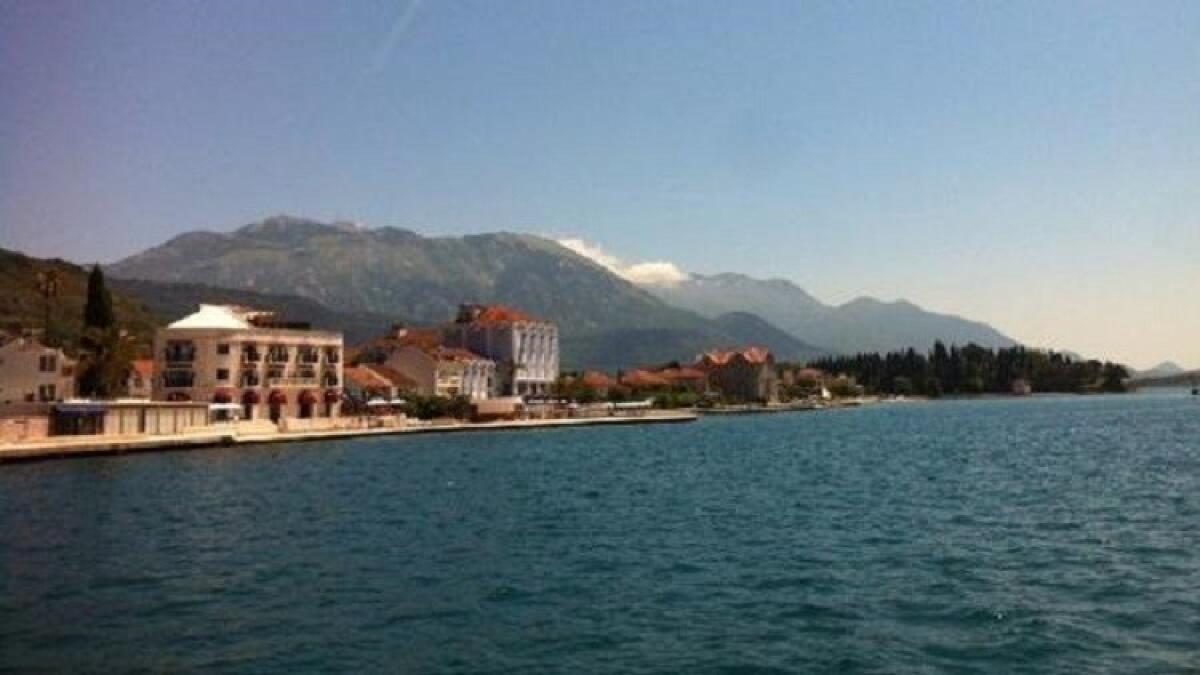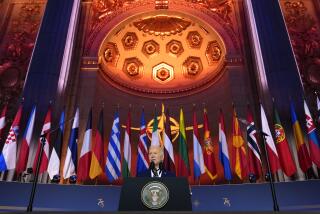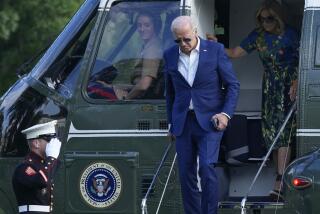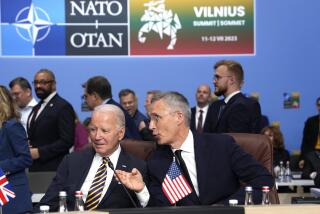Tiny Montenegro is about to become part of NATO. Here’s what you need to know

Reporting from Tivat, Montenegro — Luxury yachts slide past swimmers cooling off in the blue waters of the Adriatic. Mountains in pastel greens and grays tower in the background. Tourists sip on Aperol Spritz and espressos, enjoying platters of shrimp, octopus and calamari.
It is an idyllic scene. Yet there is tension amid the splendor of Montenegro’s scenic Adriatic coast.
On Monday, the tiny Balkan nation is set to formalize its accession into the North Atlantic Treaty Organization, becoming the military alliance’s 29th member. It is the first such NATO expansion in almost a decade, since Albania and Croatia joined in 2009, and it being met with strong domestic opposition and unbridled fury from Moscow, which has long enjoyed close ties with this nation of 620,000.
“This is bad for Montenegro,” said the manager of a luxury hotel in the resort town of Tivat, who declined to be named given the sensitivity of the issue, and was worried that Russian visitors would plummet. “Everywhere NATO goes, trouble follows.”
Moscow has already banned Montenegrin wine imports and has called on its citizens to stay away from the country, popular with Russian tourists and business people, who account for some 30% of direct foreign investment.
Though NATO has little to lose, Montenegro may prove a complicated ally — plagued as it is by rampant corruption, potent organized crime gangs, human rights abuses and the barest of democratic standards.
Here is some background on the alliance’s newest member:
A history of occupation
Montenegro is a mountainous nation in the western Balkans, bordering Albania, Bosnia and Herzegovina, Croatia, Serbia and the breakaway territory of Kosovo.
Overwhelmingly populated by Slavs, it has at various times been occupied by the Ottomans, Napoleon Bonaparte’s French Empire and the Austro-Hungarian Empire. Italian fascists occupied Montenegro during World War II, before Yugoslav “partisans,” led by Marshal Josip Broz Tito, drove the Axis forces from the area in 1944.
After the collapse of Yugoslavia, as the Balkans were plunged into a series of chaotic wars in the 1990s, it formed a rump entity with neighboring Serbia, but then declared independence in 2006, part of its shift toward greater European integration.
Its economy is based largely on the service industry, construction and ambitions to cater to high-end tourism. Its mix of stunning landscapes, medieval castles and resort towns replete with trendy bars marks it as a billionaires’ playground.
Given its numerous maritime ports and proximity to Italy, just across the Adriatic, its economy has long been bolstered by smuggling, especially of cocaine and cigarettes.
So what’s in it for NATO?
Montenegro’s tiny armed forces, around 2,000-strong and armed with largely outdated former-Yugoslav weapons, is unlikely to contribute much to the military alliance in terms of firepower.
NATO has said the accession is aimed at encouraging democratic reform, bolstering trade and security and ultimately preparing the country for European Union membership.
But the real goal may be to bar Russian warships from Adriatic ports. Montenegro is the last country along this coastal expanse to join NATO.
That means the alliance — formed in the aftermath of World War II to counter the Soviet Union and encourage European integration — now controls a massive stretch of the northern Mediterranean coast, running east from Portugal to Turkey’s southern border with Syria.
Montenegro is split over joining — and Trump’s shove didn’t help
A recent incident in which President Trump shoved aside Montenegro’s prime minister, Dusko Markovic, while meeting NATO leaders in Brussels did little to assure people here of the alliance’s commitment to the country.
But the accession process was already controversial, and has divided Montenegro roughly down the middle. Surveys show that 40% of the country is opposed to joining the alliance and 40% supports the move. Roughly a third of Montenegrins describe NATO as a threat.
Many people remain angry about NATO’s 1999 bombing of Serbia. Montenegro was a part of Serbia at the time and sustained some bombing, including on non-military targets. Protesters have staged sit-ins and large-scale street protests, at times setting NATO’s flag ablaze.
“We have fresh memories of NATO bombing our cities, killing our children and destroying our lives,” said Gojko Raicevic, an opposition activist and advocacy journalist.
“NATO’s principles are fake, illusory, and Montenegro becoming part of the alliance proves it. I say that because NATO’s declared standards are the rule of law and a high degree of democracy — yet Montenegro doesn’t have either of those,” he added.
Corruption is a problem
Raicevic may have a point. Montenegro’s former leader, Milo Djukanovic, was widely accused of using his position for personal gain.
Djukanovic led Montenegro as either prime minister or president since the collapse of Yugoslavia nearly three decades ago until last year. Italian prosecutors have linked him to a massive cigarette-smuggling operation worth billions of dollars — an allegation that Djukanovic did not deny, instead saying that it was necessary to save the country during a period of stinging sanctions.
Regardless, visceral smear campaigns — including grotesque allegations of engaging in bestiality — have been launched against his critics, and journalists are routinely sued for reporting on claims that he has links to organized crime.
“These lawsuits appear to be an effort to punish critical media outlets financially,” Human Rights Watch said, “and keep journalists in court rather than out doing their jobs.”
A Russian-backed coup was foiled — or was it fake?
On the eve of last year’s hotly contested parliamentary elections, prosecutors announced that they had foiled a Russian-backed attempt to assassinate Djukanovic, who was prime minister at the time.
The prosecutors contended that two Russian operatives had recruited hard-line Serbian nationalists to disguise themselves as police, storm the parliament and kill Djukanovic. Their aim was to derail the country’s NATO accession, the prosecutors alleged.
But Montenegro remains deeply divided over whether the plot was real or a staged event aimed at garnering more votes for Djukanovic’s party. If he had lost the election, it was likely that the country would have abandoned its NATO bid.
Two opposition politicians from a pro-Russia party are on trial for their part in the alleged plot. The evidence against them is based largely on regular trips to Russia and the testimony of a convicted murderer with a history of mental illness, reports indicate.
“It seems that the regime wants to ban us from visiting Russia, creating the atmosphere of the Iron Curtain for those who think differently. I do not consent to that and I do not intend to give up on promoting the best possible relations between Russia and Montenegro,” said Milan Knezevic, one of the politicians on trial.
Western leaders have largely embraced the government’s version of events.
Johnson is a special correspondent.
ALSO
Trump scolds NATO allies for not spending more on defense
Young people in Moldova dance away their frustrations as a threatening Russia lurks
More to Read
Sign up for Essential California
The most important California stories and recommendations in your inbox every morning.
You may occasionally receive promotional content from the Los Angeles Times.










